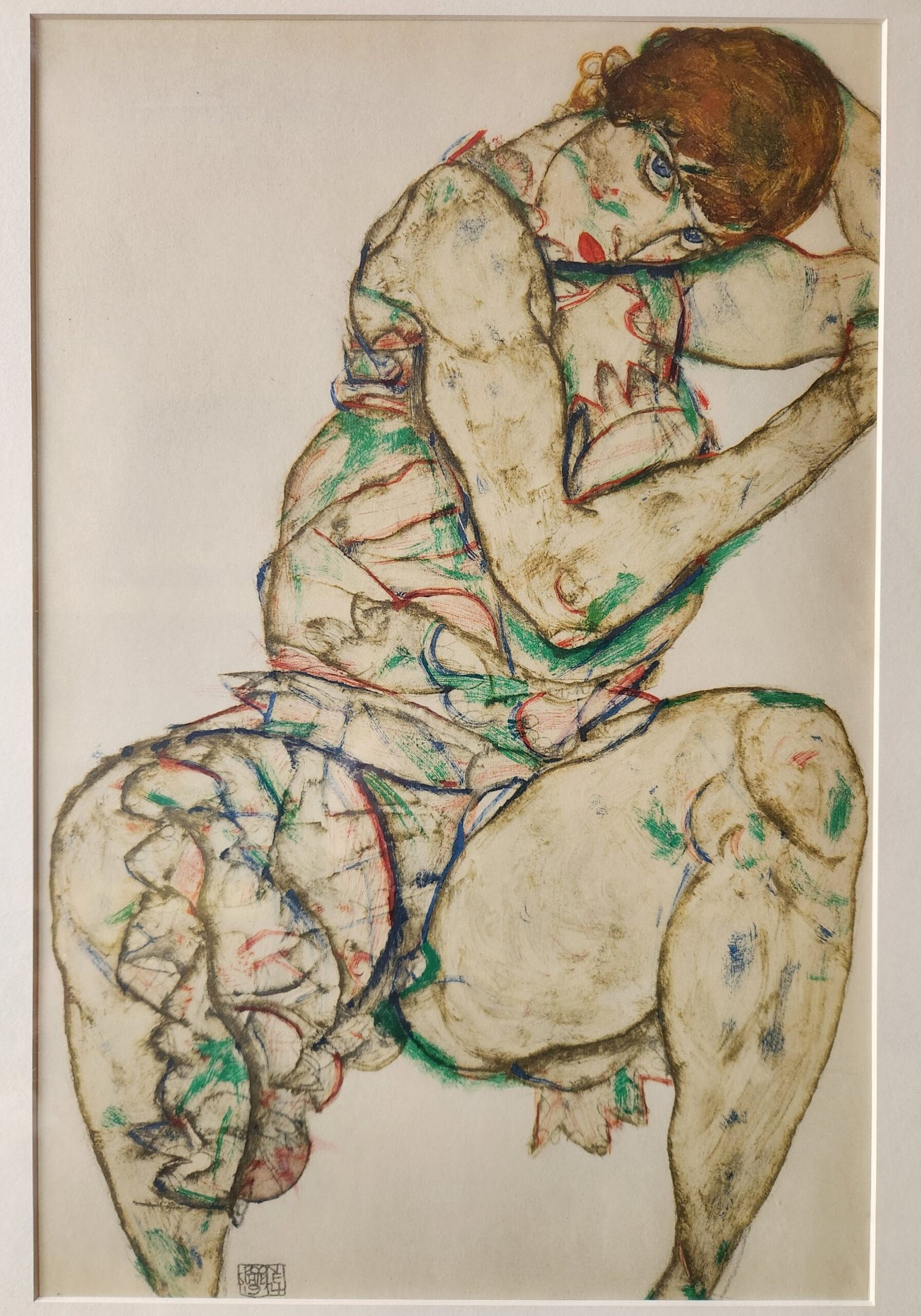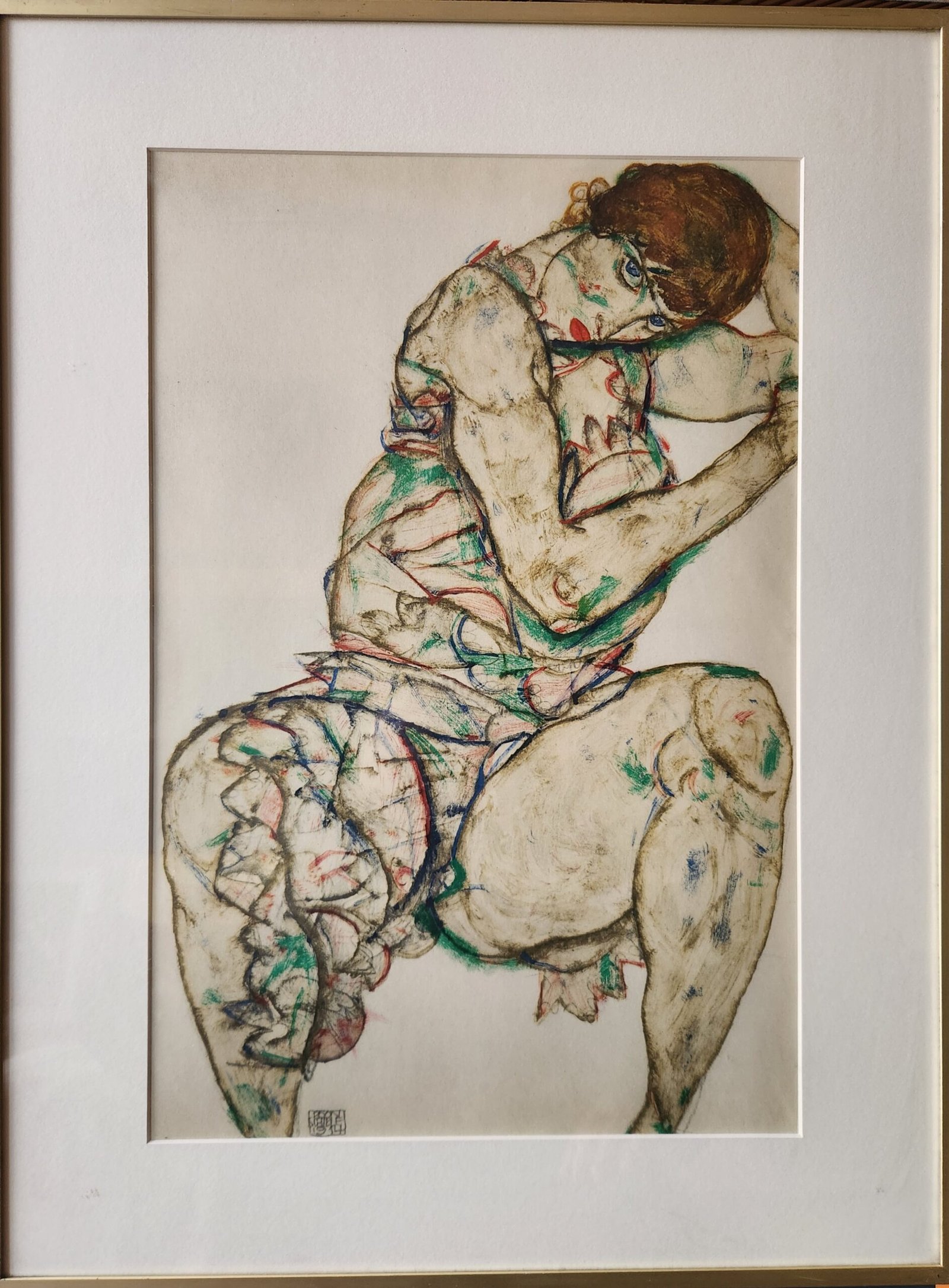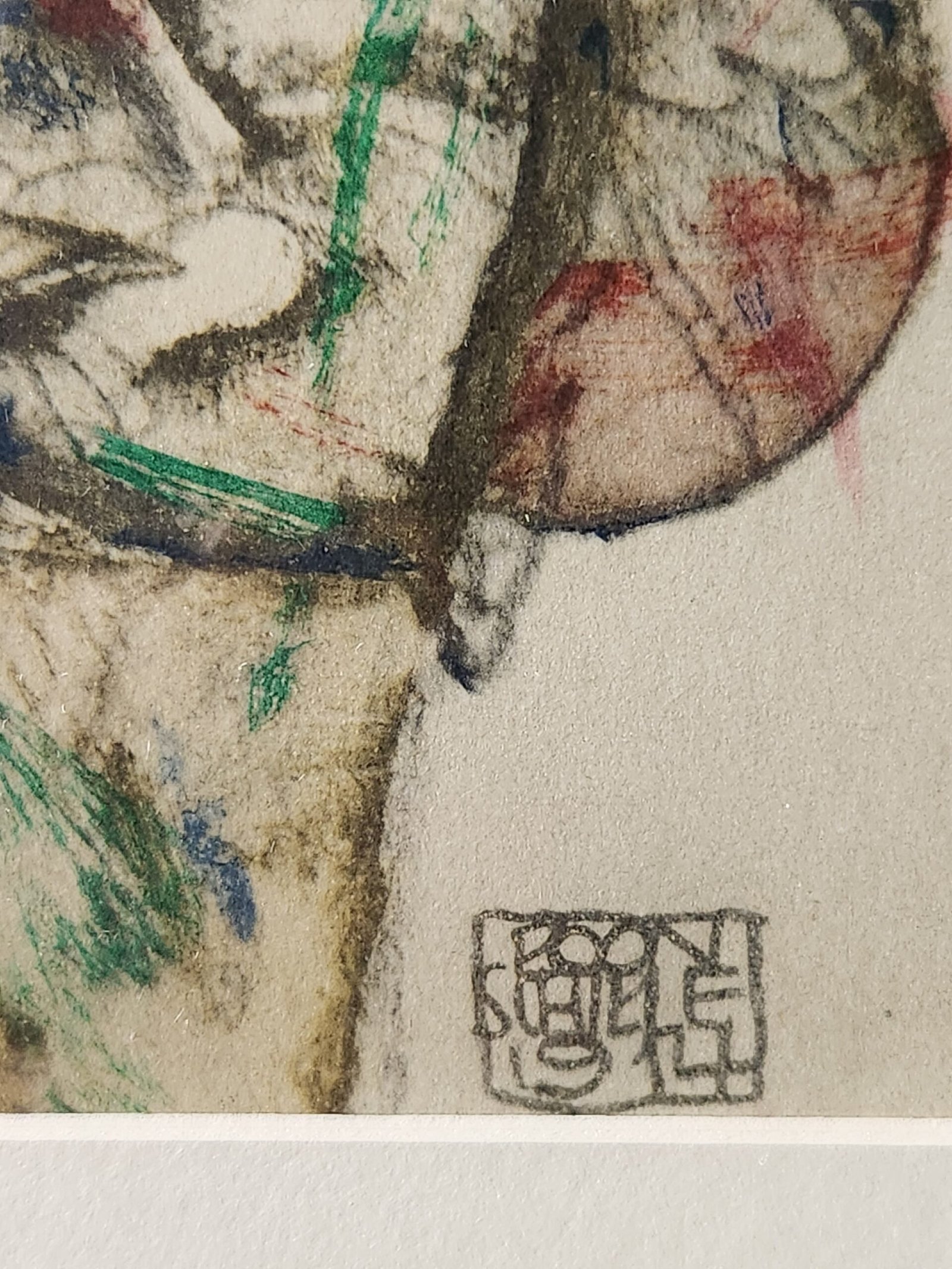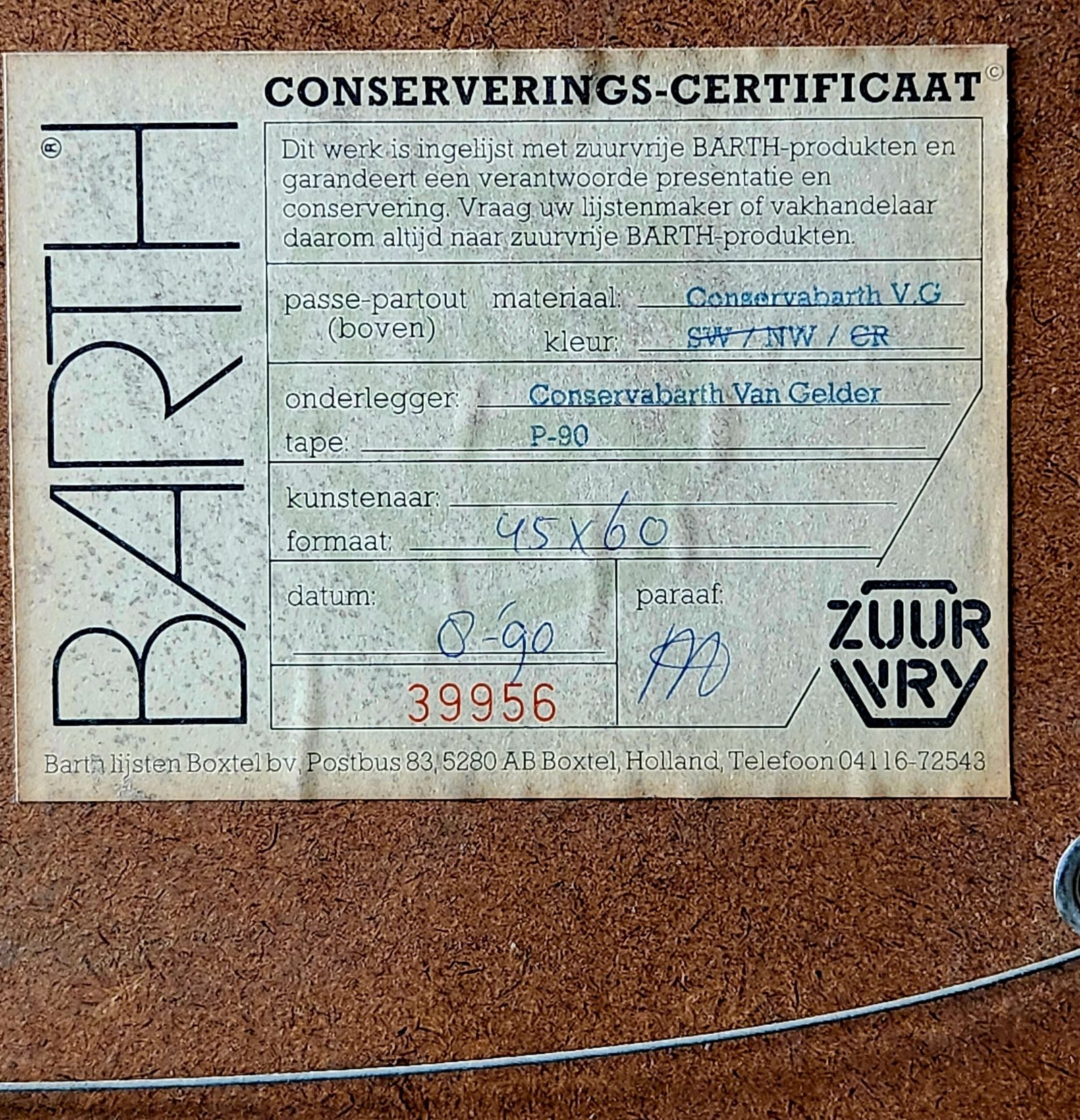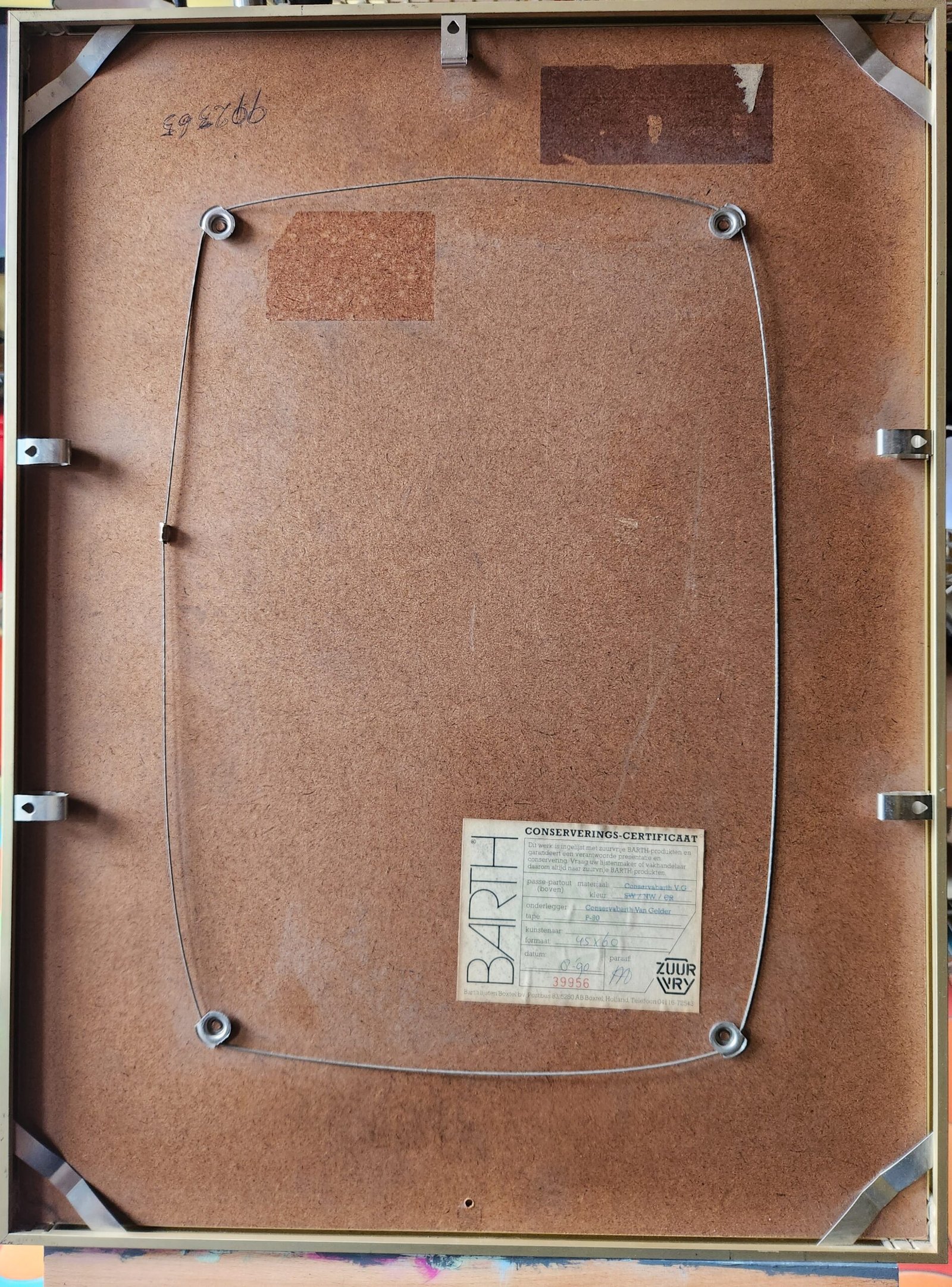Descripción
title :
Old Egon Schiele 1/3, original lithograph ” Seated woman holding her head ”
starting price $1,450
description:
Old Egon Schiele, original lithograph ” Seated woman holding her head ”. Beautiful acid free professional framed in a Barth Holland frame. registration No. 39956. Frame 60x45cm. (24” x 18”). The glass was removed so that it does not damage the work in case of breakage.
excellent condition.
Egon Schile (1890 – 1918) short biography
Egon Leo Adolf Schiele better known as Egon Schiele along with some companions.
He met the painter Gustav Klimt in 1907, whom he always admired and who was a very influential teacher for Schiele. From him he adopted his creative principles, in terms of accentuating the drawing of his paintings with thick lines, especially in the representation of the nude body. It was through Klimt that Schiele joined the new current of an artistic community called the Viennese Secession with its own building for exhibitions made by Joseph Maria Olbrich and whose motto was “To each era its art and to art its freedom”. Klimt was the most prominent painter of the group and the first president of the Secession.
Klimt also held him in high esteem, introducing him to some wealthy patrons, who ensured him some financial stability as a debutant on the Viennese art scene. During a meeting between the two, Schiele proposed to Klimt an exchange of drawings, to which he agreed and even bought him a few more. In 1908 Schiele held his first solo exhibition, at the Wiener Werkstätte founded in 1903 by architect Josef Hoffman and Koloman Moser. In it he presented works whose theoretical foundation lay in the idea of “total work of art”, art was not limited to traditional areas but also to the formal and spiritual aspects that affected daily life. He abandoned the rigid style of the Academy, and turned to expressionism: alongside portraits of friends and self-portraits, he represented the nude through aggressive figurative distortion. If Klimt presented the figure and the ornament as a contrasting relationship where he showed a kind of game between concealment and revelation and where the body became an ornamental sign, in Schiele this game became something more serious, the line is the one that showed the meaning, did not cover or hide, but released, it was this line itself that had ornamental values.
